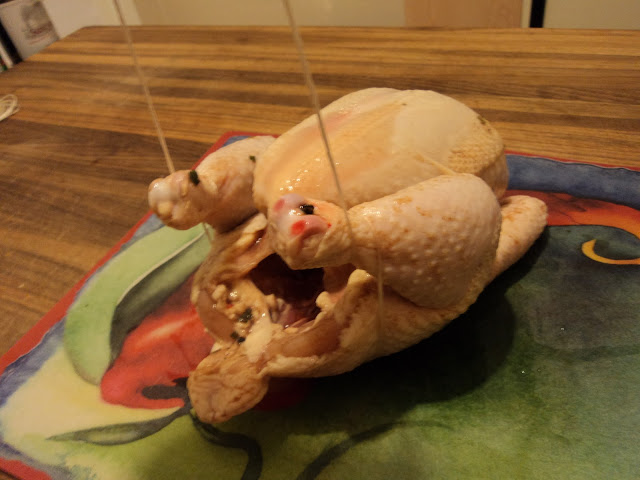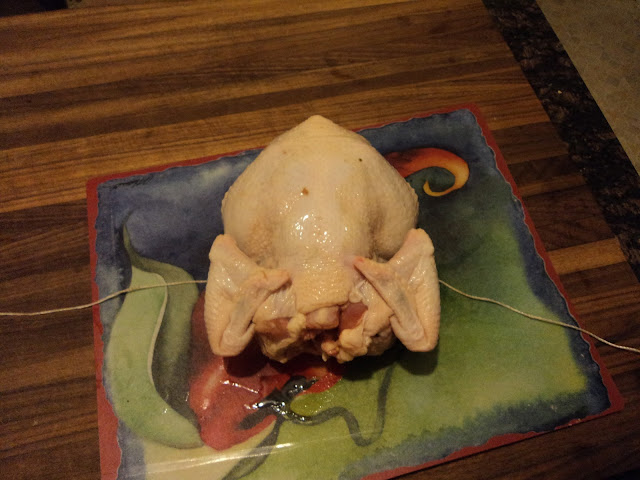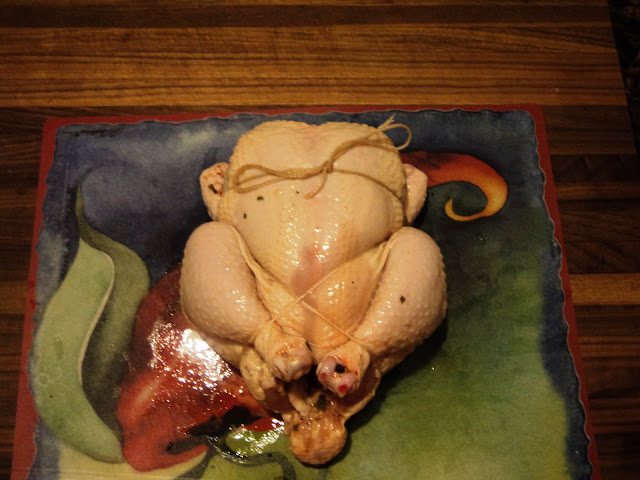First, I would like to note just how much I love football Sundays. Between two jobs and grad school, they are my one day of rest, and also a day to cook something that would normally take too long on any other night. I intentionally picked a recipe that would require a fair amount of time today, and also went with something seasonal: the Oktoberfest Brined Chicken on page 230.
I was glad to see Weber finally mention something about brining. I've been a big believer in brining for about four years now, and feel that Weber is missing the boat on a few recipes by omitting that step. The first tip I can give anyone when it comes to brining is to use a large, cheap bucket that you can buy for about five bucks. Here's mine:
This bucket is a dedicated brining bucket, and that is the only time I ever use it. The first step was to create the brine, which according to Weber I had to bring the spices to a boil and then let them cool for two hours to return to room temperature. Although I had time today, I was uninterested in wasting two hours waiting for water to cool. My solution was to only use half of the water in the boiling phase, empty the boiled water into the bucket, and then introduce the remaining water. This had two advantages: first, removing the water from the pot would prevent the residual thermal energy from the heated pot from keeping the water hot; second, bringing in the cool water would expedite the cooling process dramatically. With the brine now ready, I put in the bird.
We have a second fridge, and I always make sure that I have room for my brining bucket.
Brining is not quick, especially with whole birds. So, eight hours later, I emptied the brine, and learned how to truss a bird. First step, cut a three-foot piece of string, place the bird on its back, and bring the string under the bird's rear end.
Wrap each drumstick once to help keep them snug to the bird.
Cross the string ends over the breasts.
Flip over the bird.
Cross the string ends over each other (I even twisted them around each other to hold them together).
Flip the bird onto its back again, and secure the trussing with a knot.
The point of all this is minimize surface area. The drumsticks, for example, when untrussed can lose moisture in almost every direction. When secured close to the bird, they can only lose moisture in one direction. If this isn't done, the drumsticks (and other parts that stick out) can dry out while you are waiting for the rest of the chicken to finish cooking. After about seventy minutes I declared Das Bird ready and pulled it from the grill.
As you can see, somewhere in the cooking process the string around the legs burned away. Oh well. They didn't dry out, so it must have happened late. I let it rest for about ten minutes to let the juices redistribute, and then started slicing.
What I liked about this recipe was the subtle complexity of the flavors. Some recipes can be rather unidirectional or otherwise dominated by one or two elements. Though I tried, I could not pick out any one thing that I was tasting. The flavors were deep and well intermingled. It had sort of a sweet baking spice note to it, but that was the best I could do. Next time I would increase the salt in the brine, but otherwise this was an easy and delicious meal.















No comments:
Post a Comment